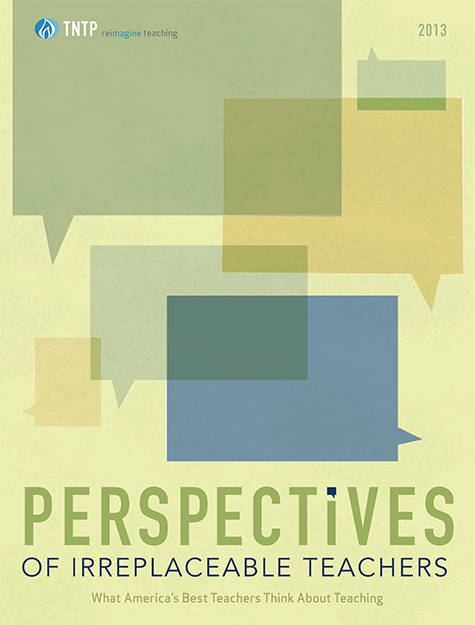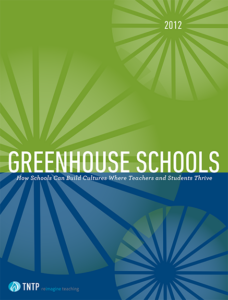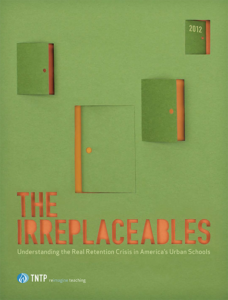Publication
Perspectives of Irreplaceable Teachers
What America's Best Teachers Think About Teaching

Teachers should have a greater voice in education policy. So what do America’s best ones really think?
Today, as schools across the country wrestle with new approaches to teacher training, evaluation, development and compensation, it is critical to consider and understand the views of teachers, especially top-performing ones. But too little is known about the opinions and experiences of these irreplaceable teachers because research rarely focuses specifically on them.
That’s why we launched Perspectives of Irreplaceable Teachers, our survey of America’s best teachers, to find out what they think about their classrooms and their careers.
Key Findings:
- Great teachers have a troubling love/hate relationship with their profession. Our respondents cherish the opportunity to make a difference in their students’ lives, but they feel beaten down by many aspects of the profession.
- When it comes to measuring success in the classroom, they value a wide array of factors. These include their students’ academic performance and future success and feedback from their school leaders, respected colleagues and students.
- They attribute little of their success to formal preparation or professional development programs. Preparation programs and formal professional development were ranked at the very bottom of the list of activities that had improved their teaching.
We hope Perspectives can help start productive conversations across the education community, and encourage everyone to seek out the views of our best teachers more often.
To learn more, download the report.
Related Topics
Stay in the Know
Sign up for updates on our latest research, insights, and high-impact work.
"*" indicates required fields

A teacher leads a one-on-one reading session focused on strategy and engagement.
About TNTP
TNTP is the nation’s leading research, policy, and consulting organization dedicated to transforming America’s public education system so that every young person thrives.
Today, we work side-by-side with educators, system leaders, and communities across the nation to reach ambitious goals for student success.
Yet the possibilities we imagine push far beyond the walls of school and the education field alone. We are catalyzing a movement across sectors to create multiple pathways for young people to achieve academic, economic, and social mobility.

